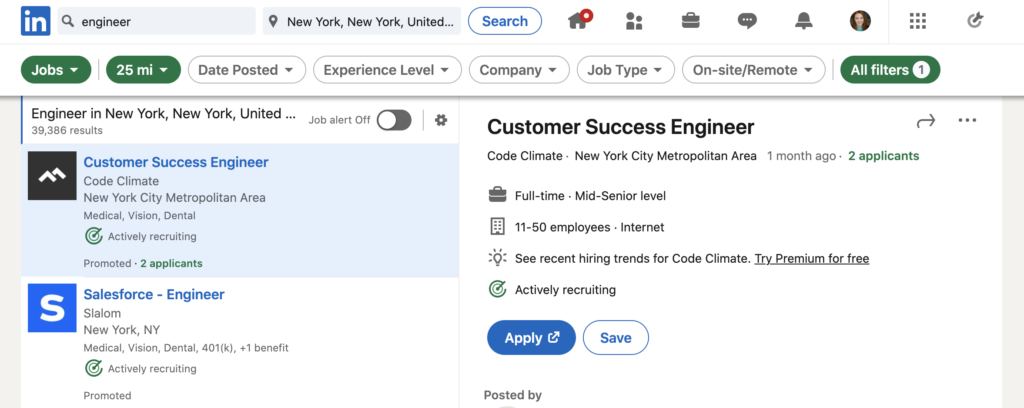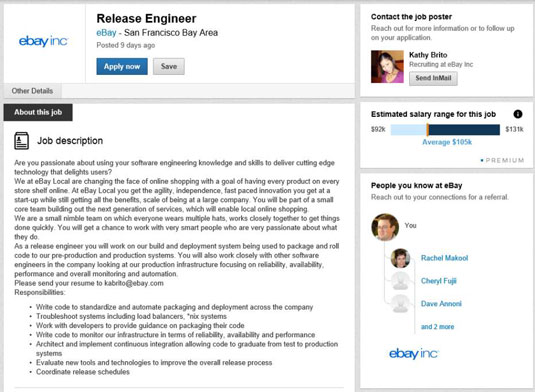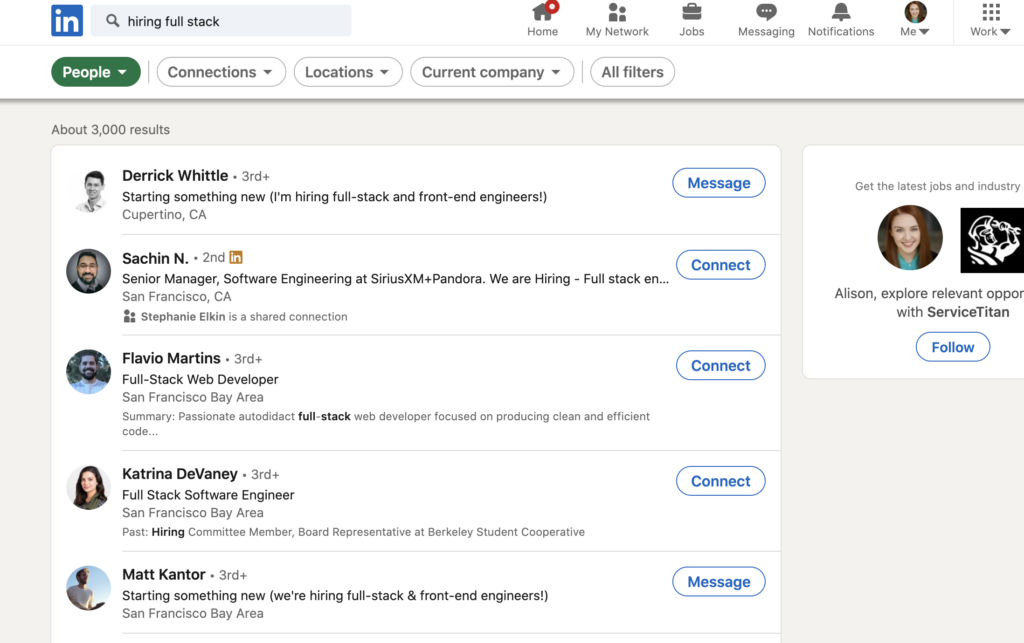Finding a job can feel overwhelming, especially with the vast number of options available online. LinkedIn has emerged as one of the most popular platforms for job seekers and employers alike. With its extensive networking capabilities and a plethora of listings, it's easy to see why. However, as you dive into your job search, it's essential to understand how to navigate this digital landscape effectively. In this post, we'll help you get started with using LinkedIn to find legitimate job opportunities while avoiding potential pitfalls.
Understanding Job Scams and Fraudulent Listings

While LinkedIn is a valuable resource for job hunting, it isn't without its challenges. Job scams and fraudulent listings can be lurking in the shadows, making it crucial for job seekers to be vigilant. Here’s what you should watch out for:
1. Recognizing the Red Flags:
- Vague Job Descriptions: If a job listing lacks specific details about the role, responsibilities, or required qualifications, proceed with caution. Legitimate companies typically provide clear information.
- Too Good to Be True: High salaries with minimal effort or qualifications often indicate a scam. If it seems too good to be true, it probably is!
- Pressure Tactics: Scammers might rush you into making decisions. If you're being pressured to apply immediately or provide information, take a step back.
2. Research the Company:
Before applying or engaging with a job posting, always research the company. Here’s how:
- Check for Company Profiles: Look for a company page on LinkedIn and read their updates, employee reviews, and interactions.
- Search for Reviews: Websites like Glassdoor or Trustpilot can provide insights into the company's reputation from past and current employees.
- Look for a Physical Presence: Legitimate companies often have an established physical address and presence. If only online, verify their legitimacy through official channels.
3. Verify Job Listings:
When you find a job that interests you, take a moment to verify its authenticity:
- Contact the Company Directly: If unsure, use contact information from the company’s official website and inquire about the job listing.
- Use LinkedIn's Tools: Utilize LinkedIn’s features like connecting with current employees or accessing company insights to assess the job's credibility.
4. Know the Types of Scams:
Understanding different types of job scams can help you avoid falling for them:
| Type of Scam | Description |
|---|---|
| Phishing Scams | Fraudsters send fake emails pretending to be from a legitimate company, attempting to steal personal information. |
| Pyramid Schemes | Jobs that require you to pay upfront or recruit others to make money are often scams. |
| Fake Interviews | Scammers often conduct fake interviews to extract personal information or money. |
In conclusion, while LinkedIn is a powerful tool for job seekers, diligence is essential. By recognizing red flags, researching companies, and verifying listings, you'll be better equipped to identify legitimate jobs and steer clear of scams. So, keep your eyes peeled, stay informed, and happy job hunting!
Also Read This: How to Make a Post on LinkedIn: A Step-by-Step Guide to Sharing Content
3. Key Signs of Legitimate Job Listings

When it comes to finding the right job on LinkedIn, it's crucial to distinguish between real opportunities and those that may not be what they seem. Here are some key signs to help you identify legitimate job listings:
- Company Profile: Start by checking the company’s LinkedIn profile. A legitimate organization will have a complete profile with a professional logo, a detailed description, and a good number of followers. If the profile looks sparse or lacks essential details, that could be a red flag.
- Clear Job Description: Legitimate job listings provide a comprehensive job description. This includes specific responsibilities, required qualifications, and information about the team or department. If the posting seems vague or overly general, it’s worth being cautious.
- Professional Language: Look for listings that are written in professional language. Typos, grammatical errors, or unprofessional phrasing can often signal a scam or a less-than-reputable employer.
- Company Website Link: A genuine job posting typically includes a link to the company’s career page or website. If the job listing only provides limited contact information or no external links, proceed with caution.
- Industry Relevance: Check whether the job aligns with the company’s industry and business model. If a high-tech company is offering a job for "Social Media Influencer," that might raise some eyebrows!
- Realistic Salaries: If a job posting advertises an unrealistic salary that sounds too good to be true—such as a huge salary for an entry-level position—it could be a scheme to attract applicants. Compare the salary ranges to similar roles in the industry.
- Active Engagement: See if the company is active on LinkedIn. Regular posts, interactions, and a consistent presence usually indicate a legitimate employer. A company that hasn’t posted in ages might not be as trustworthy.
In essence, keep an eye out for these signs when browsing through job postings. They can provide you with valuable insights into whether a job is worth pursuing or if you should skip it and keep looking!
Also Read This: How to Connect on LinkedIn Without Knowing the Person: Best Practices
4. Steps to Verify a Job Posting on LinkedIn

Once you’ve identified a job listing that looks promising, it’s wise to take a few additional steps to verify its legitimacy before applying. Here’s how you can do that:
- Research the Company: Start by searching for the company online. Look for reviews on websites like Glassdoor or Indeed, where employees share their experiences. If the company has a troubled history or little online presence, it might be worth reconsidering.
- Contact Current Employees: Use LinkedIn to connect with or message current employees. Politely ask them about their experience and the company culture. This can give you an insider's perspective and help you gauge the legitimacy of the job posting.
- Check Job Trends: Tools like LinkedIn’s Job Insights can help you see if the job role is commonly listed and how frequently the company hires for that position. If it's a brand new role with no previous openings, be cautious.
- Look for Recruitment Contacts: Verify the recruiter’s or hiring manager’s profile who posted the job. They should have a LinkedIn profile with a professional background and connections within the industry. If their profile appears fake or has no connections, keep your guard up.
- Assess Application Process: Legitimate jobs often ask for standard application materials—like a resume and cover letter—submitted through official channels. Be wary if you’re asked to share personal information (like financial information) upfront.
By following these steps, you’re taking proactive measures to protect yourself while exploring job opportunities on LinkedIn. Remember, it’s always better to do your homework than to rush into something that may not be genuine!
Also Read This: How to Download Your Resume from LinkedIn on a Phone
5. Utilizing LinkedIn Features for Job Verification
LinkedIn is more than just a platform for networking; it’s packed with features designed to help you evaluate the legitimacy of job postings. Here are some key tools you should use to ensure a job offer isn’t a scam:
- Company Profiles: Take a deep dive into the company's LinkedIn profile. Look for a well-established presence, including a comprehensive overview, a healthy number of employees, and regular updates. If the page hasn’t been updated in months, or if the number of employees is shockingly low for what they claim, consider this a red flag.
- Employee Connections: Check if you have any connections who currently work or have worked at the company. Reach out to them! They can provide you insights into the company culture and whether they’ve heard of any hiring scams.
- Job Posting Details: Legitimate job postings usually have comprehensive descriptions that detail required skills, responsibilities, and other essential information. If a job description seems vague, overly broad, or contains many typos and grammatical errors, it might not be legit.
- Insights and Analytics: LinkedIn also shows you the number of applicants for a position. If a posting has thousands of applicants but limited information, tread carefully. It may be a popular scam job targeting many users.
Using these features wisely can save you a lot of time and stress as you sift through potential job postings on LinkedIn. The goal here is to arm yourself with information, so trust your instincts when something seems off!
Also Read This: Is LinkedIn Premium Worth It in 2024? A Detailed Look at Its Benefits
6. Steps to Take If You Encounter a Suspicious Job
If you come across a job listing that raises your eyebrows, don’t panic! Here are some practical steps you can take to investigate further and protect yourself:
- Research the Company: Start by doing a quick Google search to find reviews and additional information about the company. Are their website and contact details legitimate? Are there any recent news articles that might signal scams or issues?
- Verify the Contact Person: Try to find out more about the recruiter or the hiring manager. Search their name on LinkedIn. Legitimate professionals usually have a solid profile with work experience and endorsements from others in their field.
- Ask Questions: Don’t hesitate to reach out to the company through official channels. Ask specific questions about the job posting, the application process, or company culture. A legitimate employer will be open to discussion and provide clear answers.
- Report the Job: If you have strong reasons to believe a job posting is fraudulent, report it to LinkedIn. This helps maintain the platform’s integrity and protects other users from similarly questionable postings.
- Trust Your Gut: Finally, if something feels off, it probably is. Listen to your instincts—whether that’s a vague job description, something about how the recruitment process was handled, or the presence of strange requests for personal information. Always err on the side of caution.
Following these steps can shield you from potential scams and help you make informed decisions about your job search. Remember, it's better to take your time and be thorough than to rush into a position that could be harmful. Happy job hunting!
Conclusion and Best Practices for Safe Job Searching
In today's digital age, job searching on platforms like LinkedIn can be incredibly effective, but it also comes with certain risks. To ensure a positive and secure job search experience, it's essential to implement some best practices:
- Verify Company Details: Always check the company's website and other online presence. Look for reviews and feedback from former employees.
- Base Rate of Compensation: Research average salaries for similar positions in your industry to spot any unrealistic compensation offers.
- Engage in Professional Networks: Leverage your connections to gain insights about potential employers. Personal referrals can often reveal valuable information about a company’s work culture.
- Examine Job Postings Closely: Legitimate postings typically have detailed descriptions and required qualifications. Be cautious of vague listings.
- Beware of Red Flags: Be cautious of job postings asking for personal information prematurely or those offering significant pay for minimal work.
- Utilize LinkedIn Features: Use LinkedIn's job alerts and save job features to stay organized and ensure you're applying to relevant positions.
By following these best practices, you can help safeguard your job search efforts on LinkedIn. Job hunting can be daunting, but with the right approach and vigilance, you'll increase your chances of finding legitimate opportunities that align with your career goals.
In conclusion, being proactive and informed in your job search will not only protect you from scams but also enhance your chances of landing a fulfilling position.
 admin
admin








